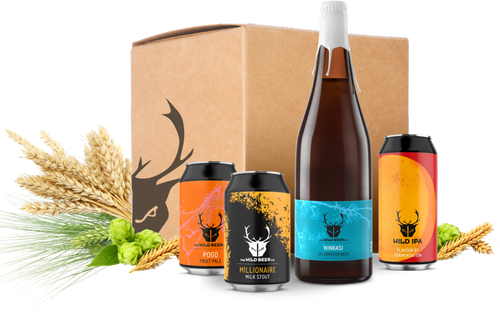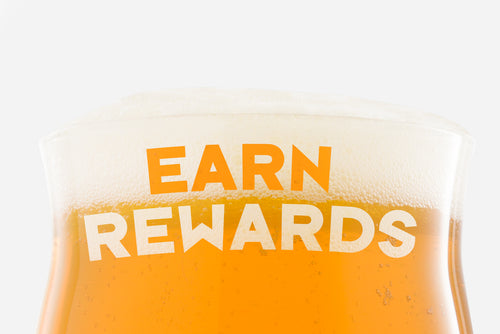Beer has been beloved for thousands of years, with new ways of brewing and fermenting flavours constantly in development over the centuries. Most beers are made using yeast, malt, and hops, but they can have a variety of aromas and tastes depending on the individual recipe.
Pale ales are some of the most popular types of beer around the world, but it’s not as easy to tell them apart by flavour as it would be for a stout and a sour, for example. Adding to the confusion is the recent IPA renaissance in the craft beer world – how is India Pale Ale different?
Unless you’re an avid beer enthusiast, you may not be able to distinguish between pale ales and IPAs. To help you understand why they’re not quite the same, this blog dives into the history of IPAs in comparison to standard pale ale, exploring the pros and cons of both types.
What is pale ale?
Which came first, the pale ale or the IPA? As you might have guessed from the fact that IPAs get two-thirds of their name from the former, pale ales arrived on the alcoholic beverage scene first.
Dating back to the 1700s when British brewers began roasting lighter malts, these ales are named for their paler amber shade. They’re also sometimes known as bitters, because they allow more of the bitter hops to come through in the flavour, compared to traditionally darker beers.
Pale ales are a kind of bridge between lighter lagers and darker stouts, and quickly became popular in many countries. There are lots of beers that fall under the pale ale umbrella, usually named for their country of origin – for example, APAs (American Pale Ales) and EPAs (English Pale Ales).
Authentic British pale ale was the only hop-heavy beer for around 100 years, until the emergence of IPAs (India Pale Ales) in the 1800s. While IPAs fall into the pale ale category, they’re a class of their own – so let’s look into how the invention of India Pale Ale came about.
What is an IPA?
There are conflicting stories about the origin of India Pale Ale, but it’s widely accepted that the beer with this name was first mentioned in an 1829 in an Australian newspaper. It was already popular in Britain by the 1920s, developed by British breweries in the early 1800s to be shipped out to India.
The common story is that when the British Indian colonies were established, the British Indian army and workers in the East India Trading Company missed the beer back home. They either couldn’t find a comparable brew in India or it was too hot there to brew their own, and often exports from the UK would arrive contaminated or stale after months at sea.
It’s believed that British brewers adjusted their production methods to address this problem, adding more hops as a natural preservative. This would also increase the alcohol content and the intensity of the flavour, while extending the life of the beer to endure 4-6 months on a ship to India.
The long journey turned out to actually improve the quality and taste of the beer, which quickly became a hit in both Britain and India. This sought-after beverage was soon known as India Pale Ale, popular for its refreshing balance of fruity sweetness and bitter hops.
India Pale Ales remained popular over the next century or so, but fell out of favour after the First World War. It wasn’t until a craft beer movement began in the USA in the 1970s that people began to rediscover and redevelop IPAs.
IPAs are known for being stronger than regular pale ales, but there’s no official standardisation for when a pale ale becomes an IPA. The texture, taste, and intensity depend on the brewer’s method and the ingredients they use. Since IPAs are very diverse, you should always check the ABV (Alcohol By Volume) percentage before buying and drinking a stronger beer than you intended to.
Pale ale and IPA differences
Since IPAs are a kind of sub-category of pale ales, they obviously share several characteristics. For example, they both have a stronger concentration of hops than other types of beer, but IPAs have the strongest hops of the two.
The issue with this is that bitterness is often subjective to the palate of the drinker. One person might find an IPA less bitter than a pale ale, despite the former having more hops. Or another person might find that same pale ale to be more bitter than the same IPA. It really depends on the brewer’s recipe and the individual’s taste preferences.
In general, though, these are the main differences between pale ales and IPAs:
|
COMPARISONS |
PALE ALE |
IPA (INDIA PALE ALE) |
|
DEFINITION |
Pale malt-based English ale. |
Stronger brew of traditional English bitter ale. |
|
ORIGIN |
Brewed from roasted malt in the UK (England). |
Created in the UK for export to Indian colonies. |
|
MALT |
Balanced ratio of malt to hops, with a sweet finish. |
More malty than other pale ales, with stronger flavours. |
|
TASTE |
A fruity and crisp yet bready malt-based taste, without an overwhelming flavour of hops. |
A harsher hops flavour, often balanced by strong notes of citrus and earthy or floral tones. |
|
INTENSITY |
Lower intensity due to less hops and lower alcohol content. |
Stronger intensity due to more hops and higher alcohol content. |
What it basically comes down to is that pale ales tend to have more body to them with a medium intensity, while IPAs have a drier mouthfeel and a stronger aftertaste. Generally, pale ale is the beer of choice for Europeans and Americans, while IPAs remain the preference of consumers in India.
Pale ale vs IPA: which is better?
As you’ve probably realised from what you’ve read so far, there’s no clear-cut answer to whether IPAs or pale ales are better. The enjoyability of the experience depends on your own taste buds.
If you want something light, yet hoppy, with a touch of bitterness, then you should go for a pale ale. Or, i you prefer bolder flavours with fruitier aromas, you should try an IPA. In the end, if you like one of these types of beer, you’re likely to enjoy the other, too.
Both pale ales and IPAs are easy enough to drink, and make a satisfyingly refreshing treat at any time of the year. Whichever you prefer, or whichever you’re interested in trying, you’re sure to find a delicious flavour profile to suit your preferences at The Wild Beer Co.
Be sure to browse our collection of unique IPAs and pale ales today, and place an order online for delivery to your door within 2-5 working days.





